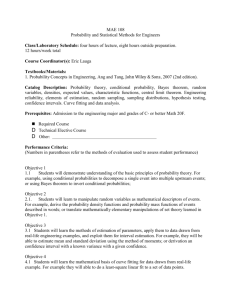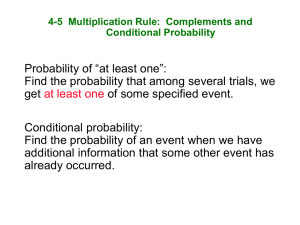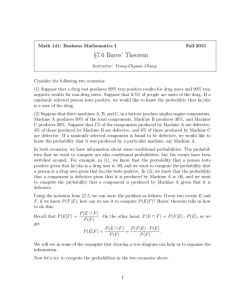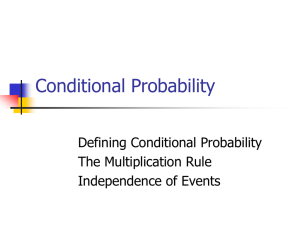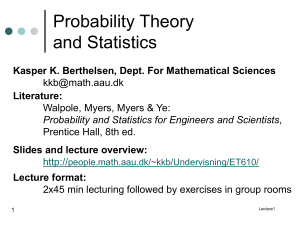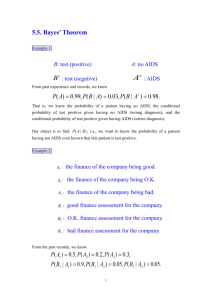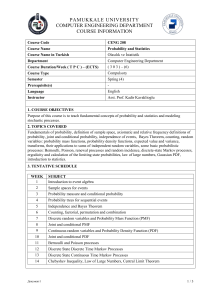Lab Session 1
advertisement
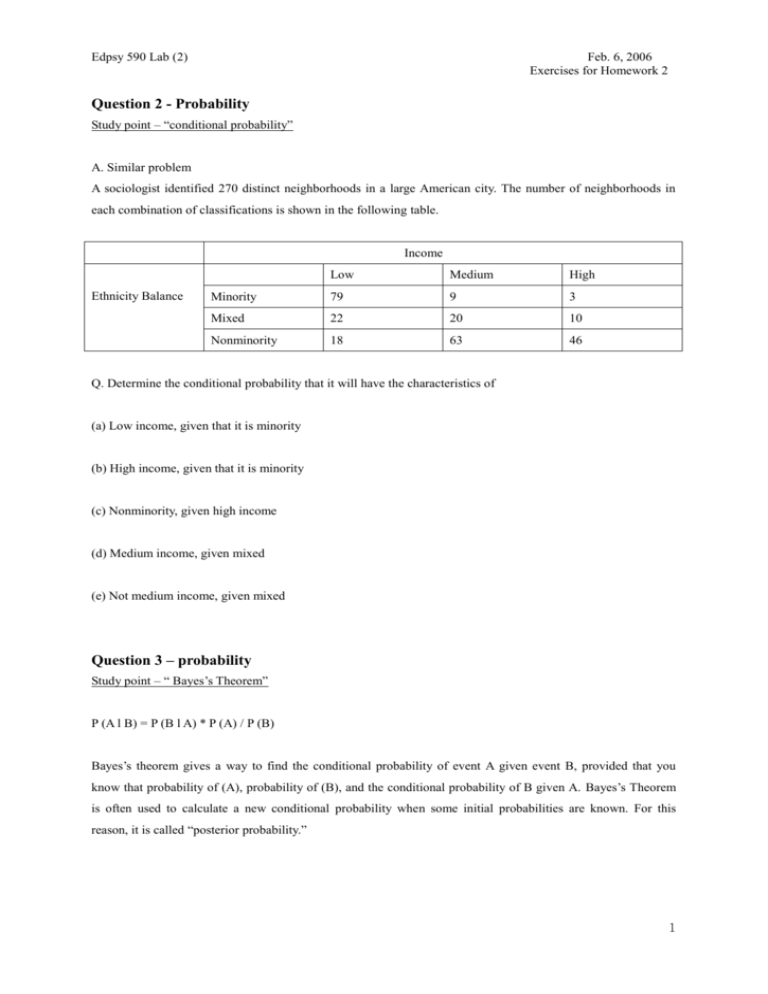
Edpsy 590 Lab (2) Feb. 6, 2006 Exercises for Homework 2 Question 2 - Probability Study point – “conditional probability” A. Similar problem A sociologist identified 270 distinct neighborhoods in a large American city. The number of neighborhoods in each combination of classifications is shown in the following table. Income Ethnicity Balance Low Medium High Minority 79 9 3 Mixed 22 20 10 Nonminority 18 63 46 Q. Determine the conditional probability that it will have the characteristics of (a) Low income, given that it is minority (b) High income, given that it is minority (c) Nonminority, given high income (d) Medium income, given mixed (e) Not medium income, given mixed Question 3 – probability Study point – “ Bayes’s Theorem” P (A l B) = P (B l A) * P (A) / P (B) Bayes’s theorem gives a way to find the conditional probability of event A given event B, provided that you know that probability of (A), probability of (B), and the conditional probability of B given A. Bayes’s Theorem is often used to calculate a new conditional probability when some initial probabilities are known. For this reason, it is called “posterior probability.” 1 Edpsy 590 Lab (2) Feb. 6, 2006 Exercises for Homework 2 The simplest case is as follows. We have a hypothesis, H. For example, H = "This new power supply is defective.". There is clearly some uncertainty in this statement. The question is, how much? A second question is, how would you quantify the uncertainty? Call the probability of H, p(H). That is, p(H) is the probability that a randomly chosen new power supply is defective. To determine a value of p(H) someone would have to thoroughly test a large sample of power supplies. Presumably that is just what the manufacturer's quality control people do. Now suppose you have a subset of these new power supplies, those with noisier fans. Suppose E= "the new power supply has a noisy fan". Now we ask, what is the probability that the new power supply is defective, given that the fan is noisy? This probability is written, p(H | E), the probability of H occurring, given E has occurred. (Intuitively we would be worried that p(H | E) > p(H).) We can think of E as evidence that the power supply is defective. Often p(H | E) is not so easy to measure. Bayes found a simple formula which "turns p(H | E) around". The formula is, p(H | E) = p(E | H) *p(H) / p(E) Here p(E | H) is the probability that the power supply is has a noisy fan given that it is defective.. Question 4 – Probability distribution Study point - calculating Mean and Variance B. Similar problem Q. A psychologist kept a large population of rats. Each rat was to be observed individually running a maze. If a rat had a tendency to turn right in the maze, it was given a score X=1. However, it the rat had a tendency to turn left, it got a score X= 2. If any of the population of rats had equal probability of being a “right-turner” or “leftturner,” find population distribution of X. Find the means and variance of this distribution. 2




